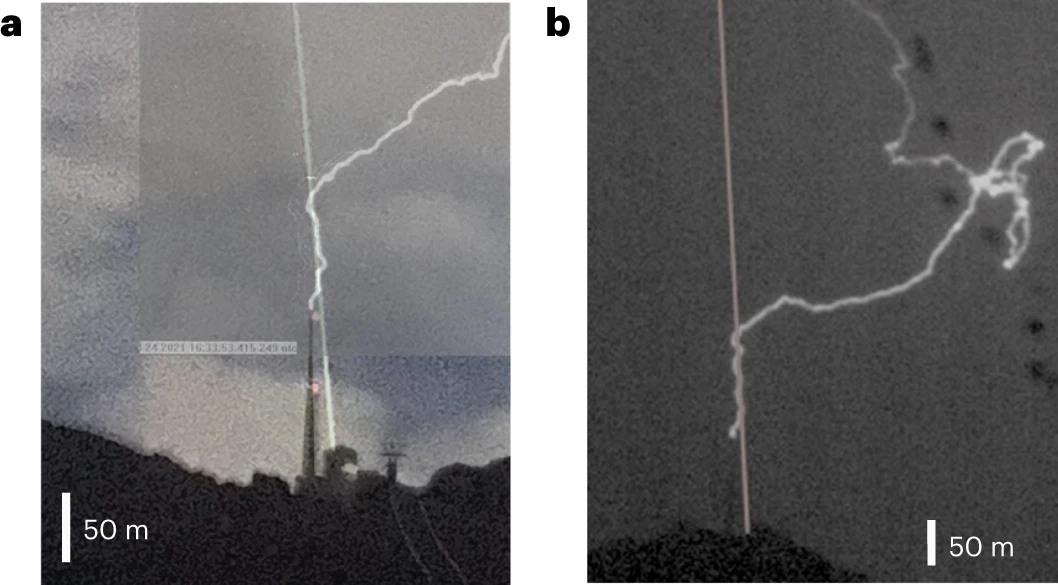- #1
- 11,308
- 8,732
I like this idea. Very creative, but in retrospect it sounds obvious. Just create a path of ionized atoms.

https://arstechnica.com/science/2023/01/lasers-used-to-guide-lightning-strikes-to-a-safe-target/
Lightning rods protect buildings by providing a low-resistance path for charges to flow between the clouds and the ground. But they only work if lightning finds that path first. The actual strike is chaotic, and there's never a guarantee that the processes that initiate it will happen close enough to the lightning rod to ensure that things will work as intended.
A team of European researchers decided they didn't like that randomness and managed to direct a few lightning strikes safely into a telecom tower located on top of a Swiss mountain. Their secret? Lasers, which were used to create a path of charged ions to smooth the path to the lightning rod.
